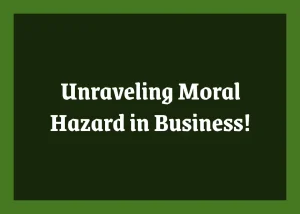Agency problems are a common source of frustration and confusion in business. It is essential to understand the different types of agency problems and the solutions available to help you manage them. In this comprehensive guide, we will explain what agency problems are, discuss the different types of agency problems, and outline solutions to help you manage them.
Earn a certificate in your dream career for an affordable price at IAP Career College today!
Introduction to Types of Agency Problems
Agency problems arise when there is a conflict of interest between two parties, known as the principal and the agent. The principal is the party that hires the agent to perform a task or service and the agent is the party that is hired to perform the task. Agency problems occur when the interests of the principal and agent are not aligned. This can lead to the agent prioritizing their own interests, instead of the interests of the principal.
Agency problems can have a significant impact on businesses and organizations. They can lead to decreased efficiency, higher costs, and a lack of trust. In order to properly manage agency problems, it is important to understand the different types of agency problems and solutions available.
Definition of Agency Problems
An agency problem is a conflict of interest that arises between two parties, the principal and the agent. The principal is the party that hires the agent to perform a task or service. The agent is the party that is hired to perform the task. Agency problems occur when the interests of the principal and agent are not aligned.
Agency problems can arise from a variety of different factors. These include misaligned incentives, inadequate monitoring, lack of communication, or a lack of trust. Agency problems can lead to a decrease in efficiency, higher costs, and a lack of trust between the two parties.
Principal-Agent Problems
Principal-agent problems occur when the agent is not acting in the best interests of the principal. This can be due to a misalignment of incentives, inadequate monitoring, lack of communication, or a lack of trust.
Principal-agent problems can lead to decreased efficiency, higher costs, and a lack of trust. For example, if the agent is not properly incentivized, they may not be motivated to act in the best interests of the principal. If the principal is not adequately monitoring the agent’s performance, the agent may not be held accountable for their actions. If there is a lack of communication between the two parties, the agent may not understand the expectations of the principal.
Moral Hazard Problems
Moral hazard problems occur when the agent has an incentive to take risks that are not in the best interests of the principal. For example, if the agent has an incentive to increase their profits, they may take risks that could result in losses for the principal.
Moral hazard problems can lead to a decrease in efficiency, higher costs, and a lack of trust. If the agent is not adequately monitored, they may take risks that could result in losses for the principal. Additionally, if the agent is not properly incentivized, they may not be motivated to act in the best interests of the principal.
Adverse Selection Problems
Adverse selection problems occur when the principal is not adequately informed about the agent’s capabilities. For example, if the principal is not aware of the agent’s qualifications or experience, they may select an agent that is not capable of completing the task.
Adverse selection problems can lead to decreased efficiency, higher costs, and a lack of trust. If the principal is not adequately informed about the agent’s capabilities, the agent may not be able to complete the task. Additionally, if the principal is not adequately monitoring the agent’s performance, the agent may not be held accountable for their actions.
Incentive Problems
Incentive problems arise when the agent is not properly incentivized to act in the best interests of the principal. For example, if the agent does not have an incentive to complete the task in a timely manner, they may take longer than necessary to complete the task.
Incentive problems can lead to decreased efficiency, higher costs, and a lack of trust. If the agent is not properly incentivized, they may not be motivated to act in the best interests of the principal. Additionally, if the principal is not adequately monitoring the agent’s performance, the agent may not be held accountable for their actions.
Conflict of Interest Problems
Conflict of interest problems arise when the agent has competing interests that conflict with the interests of the principal. For example, if the agent has an incentive to increase their profits, they may take risks that could result in losses for the principal.
Conflict of interest problems can lead to decreased efficiency, higher costs, and a lack of trust. If the agent is not adequately monitored, they may take risks that could result in losses for the principal. Additionally, if the principal is not properly incentivizing the agent, they may not be motivated to act in the best interests of the principal.
Free Rider Problems
Free rider problems occur when the agent is not properly monitored or incentivized. For example, if the agent is not held accountable for their actions, they may take advantage of the situation and not act in the best interests of the principal.
Free rider problems can lead to decreased efficiency, higher costs, and a lack of trust. If the agent is not adequately monitored, they may take advantage of the situation and not act in the best interests of the principal. Additionally, if the agent is not properly incentivized, they may not be motivated to act in the best interests of the principal.
Monitoring Problems
Monitoring problems arise when the principal is not adequately monitoring the agent’s performance. For example, if the principal is not adequately monitoring the agent’s performance, the agent may not be held accountable for their actions.
Monitoring problems can lead to decreased efficiency, higher costs, and a lack of trust. If the principal is not adequately monitoring the agent’s performance, the agent may not be held accountable for their actions. Additionally, the agent may not be motivated to act in the best interests of the principal.
Solutions to Agency Problems
Fortunately, there are a variety of solutions that can help to manage agency problems. These include:
- Aligning incentives: It is important to ensure that the agent’s incentives are aligned with the interests of the principal.
- Adequate monitoring: The principal should ensure that the agent is adequately monitored and held accountable for their actions.
- Clear communication: The principal and agent should ensure that there is clear and effective communication between them.
- Establishing trust: It is important to ensure that there is trust between the principal and the agent.
By implementing these solutions, businesses and organizations can ensure that agency problems are managed effectively.
Conclusion
Agency problems are a common source of frustration and confusion in business. It is essential to understand the different types of agency problems and the solutions available to help you manage them. In this comprehensive guide, we have discussed what agency problems are, the different types of agency problems, and outlined solutions to help you manage them.
By understanding the different types of agency problems, businesses and organizations can ensure that they are managed effectively. By aligning incentives, monitoring performance, communicating effectively, and establishing trust, businesses and organizations can ensure that agency problems are managed effectively.
We hope that this comprehensive guide has helped to shed light on the different types of agency problems and the solutions available to help you manage them.





